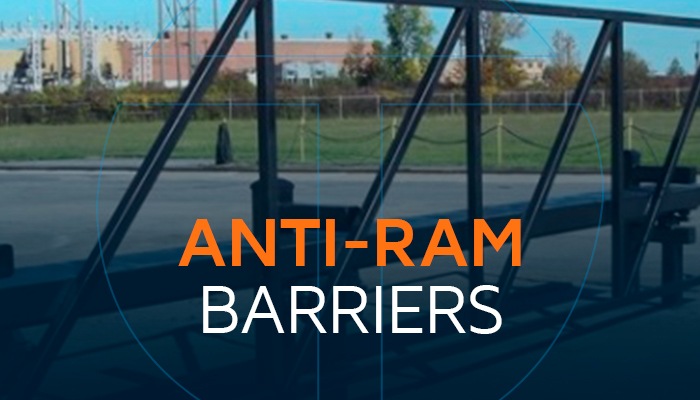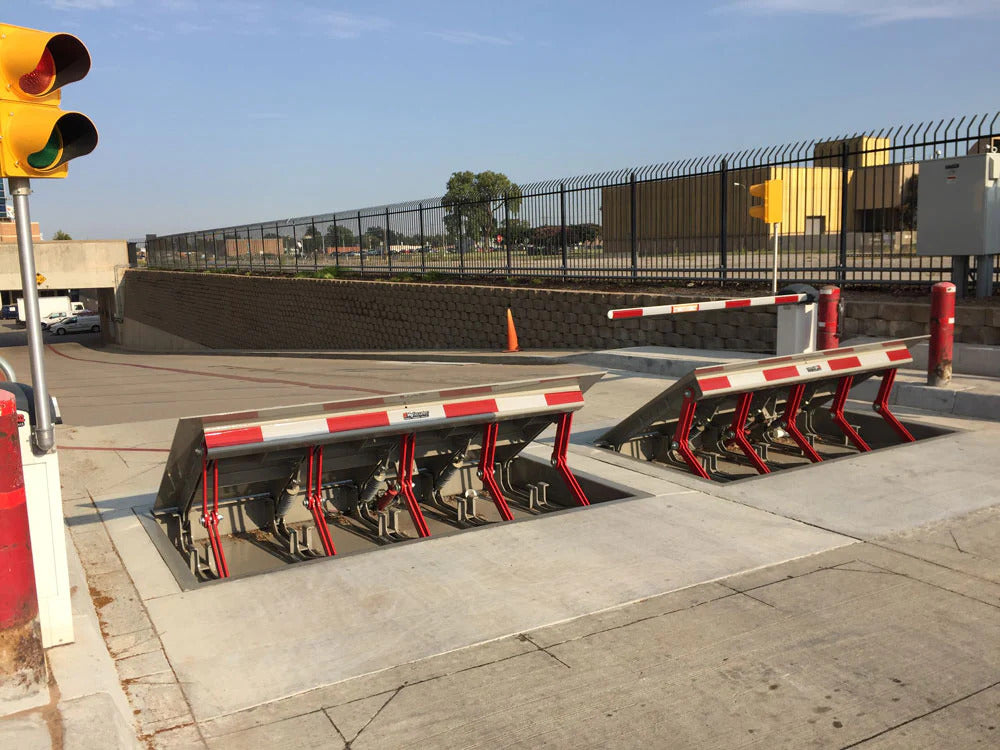Some Known Factual Statements About Wedge Barriers
Wiki Article
Get This Report on Wedge Barriers

The Best Strategy To Use For Wedge Barriers
g., springtime support 65 )may be dealt with to the end of the springtime rod 58 to enable compression of the springs 60. As the springtimes 60 are pressed in between the springtime sustains 62, the springtime assembly 54 generates a pressure acting on the camera combined to the spring pole 58 in a direction 66. As an example, the remaining force put on the camera to release the wedge plate 16 may be given by an electromechanical actuator 84 or other actuator. Because of this, the springtime assembly 54 and the actuator 84(e. g., electromechanical actuator)might run together to translate the camera and raise the wedge plate 16.
As pointed out over, the springtime setting up 54 applies a continuous pressure on the camera, while the electromechanical actuator may be controlled to put in a variable force on the web cam, thereby enabling the training and lowering( i. e., releasing and pulling back )of the wedge plate 16. In certain personifications, the constant force used by the springtime setting up 54 may be adjustable. g., electromechanical actuator) is impaired. As will be appreciated, the springtime assembly 54 might be covered and safeguarded from particles or other components by a cover plate(e. g., cover plate 68 displayed in FIG. 4) that may be considerably flush with the raised surface area 38 of the structure 14. As mentioned above, in the deployed position, the wedge plate 16 serves to block gain access to or traveling beyond the obstacle 10. For example, the barrier 10(e. g., the wedge plate 16 )might block pedestrians or vehicles from accessing a home or path. As talked about over at this website above, the obstacle 10 is connected to the support 30 secured within the foundation 14,

front braces 71. Because of this, the affiliation assemblies 72 might pivot and rotate to make it possible for the collapse and extension of the affiliation assemblies 72 throughout retraction and implementation of the bather 10. The affiliation settings up 72 reason movement of the wedge plate 16 to be restricted. her latest blog If an automobile is traveling towards the released wedge plate 16(e. For example, in one circumstance, the safety legs 86 may be extended duringmaintenance of the barrier 10. When the security legs 86 are deployed, the safety and security legs 86 sustain the weight of the wedge plate 16 against the surface 12. As an outcome, the lifting device 50 may be deactivated, serviced, gotten rid of, replaced, and so forth. FIG. 5 is partial perspective view of an embodiment of the surface-mounted wedge-style barrier 10, showing the webcam 80 and the webcam surface areas 82 of the training device 50. Specifically, 2 camera surfaces 82, which are referred to as lower cam surface areas 83, are positioned below go to my blog the cam 80. The lower cam surfaces 83 might be dealt with to the surface 12 (e. For instance, the lower cam surface areas 83 and the placing plate 85 may develop a solitary piece that is protected to the anchor 30 by bolts or other mechanical bolts. In addition, 2 webcam surfaces 82, which are referred to as top webcam surface areas 87, are positioned over the cam 80 and coupled to (e. In various other personifications, intervening layers or plates may be positioned between the surface 12 and the lower cam surfaces 83 and/or the wedge plate 16 and the top camera surface areas 87 As mentioned over, the camera 80 translates along the cam surfaces 82 when the wedge plate 16 is raised from the withdrawed position to the released position. In addition, as mentioned above, the spring setting up 54 (see FIG. 3 )may offer a pressure acting on the cam 80 in the direction 102 by means of springtime rod 58, which may decrease the force the electromechanical actuator 84 is needed to apply to the camera 80 in order to actuate and raise the wedge plate 16. 1 )to the deployed position(see FIG. 4). As shown, the webcam 80 includes track wheels 104(e. g., rollers), which get in touch with and translate along the cam surfaces 82 during procedure.
Report this wiki page